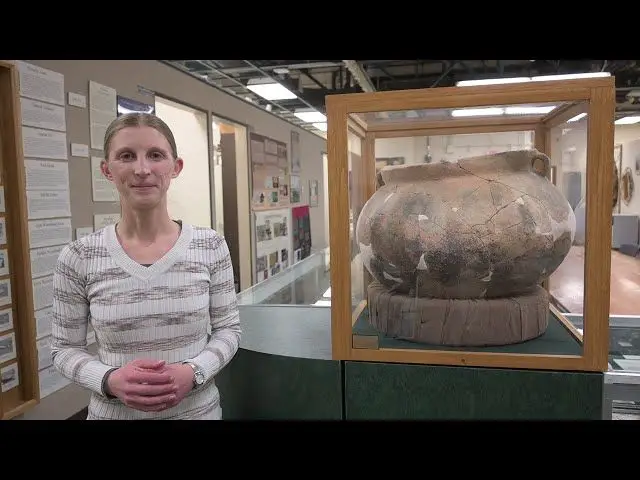How Large Should The Base Be For The Coil Pot?
A coil pot is a type of pottery made using the coil building technique, where long coils of clay are stacked and joined together to form the walls and base of a pot. This method of handbuilding has been used across many cultures for centuries to create a variety of functional and decorative ceramic vessels.
Coil pots allow potters to build vessels with thick sturdy walls using a rope-like rolled clay. The technique involves rolling out long sausagelike “snakes” or coils of clay, then stacking and blending the coils together while gradually shaping the clay upwards into the desired form. Coil building gives potters a high level of control and flexibility when constructing ceramic pieces.
The purpose of coil built pottery vessels has historically been utilitarian – used for cooking, storing food and water, and carrying items. Coil pots are valued for their durability, stability, and insulating properties. They can be built quickly by hand without the use of a potter’s wheel. Modern coil vessels are also created for decorative use as sculptures, planters, and one-of-a-kind art pieces.
Coil Pot Size
Coil pots come in a wide range of sizes, from small bowls and cups to large decorative pots. Some common size ranges include:
Small coil pots – These are usually 3-6 inches tall and 3-5 inches wide. Small coil pots work well as bowls, cups, and small containers. They require less clay and are quicker to make than larger pieces.
Medium coil pots – Ranging from 6-12 inches tall and 5-10 inches wide. Medium pots have enough size for functions like vases, juice pitchers, and cookie jars. They balance utility with manageable clay usage.
Large coil pots – Typically 12+ inches tall and 10+ inches wide. These pots make dramatic statements as centerpieces, planters, umbrella stands, and more. However, they require significant time, effort, and clay to construct.
Xtra-large coil pots – These specialized pieces can be over 2 feet tall and wide. They are major undertakings best left to experienced coil potters. Giant coil pots work as storage vessels, yard art, and decorative pots.https://wheelandclay.com/blog/coiling-pottery/
It’s generally recommended for beginner coil potters to start small, around 3-6 inches tall. This allows practice of technique before tackling bigger projects. The size of a coil pot depends on its intended purpose and the potter’s skill level.https://ceramike.com/how-to-make-a-coil-pot-a-guide/
Clay Type
The type of clay used for a coil pot significantly impacts the recommended base size. Clays have different levels of plasticity, strength, and shrinkage rates that determine how thick the clay coils and base need to be for structural integrity.
More plastic, flexible clays like stoneware can be rolled into thinner coils and shaped into taller, thinner-walled pots. According to Ceramike, stoneware clay coils can be as thin as 1/4″ and still maintain their form. With slimmer coils, the base only needs to be about 1/2″ thick to support the thinner walls.
In contrast, less plastic clays like terracotta require thicker coils, usually a minimum of 1/2″ thick. To support the sturdier coil walls, terracotta pots need a more substantial base around 3/4″ to 1″ thick. The thickness helps prevent cracking and collapse under the weight of thicker clay coils.
Porcelain is an extremely fine clay that can be challenging for beginners to work with when coiling. Porcelain coils should be at least 1/2″ thick, and the base should be 3/4″ to 1″ thick to create a sturdy foundation for the delicate coils.
Understanding the plasticity and strength of the clay type is crucial for determining the minimum needed base thickness to bear the weight of the coils for a structurally sound coil pot.
Base Thickness
For a stable coil pot, the base or bottom should be thick and sturdy. The bottom supports the weight of the entire vessel, so it must be dense and resistant to warping or cracking during the drying and firing process.
A general guideline is to make the base at least 1/2 inch thick. Some potters recommend 3/4 inch or even 1 inch thickness for larger pots. The clay coils can be layered and compressed to gradually build up the desired thickness (source: https://ancientpottery.how/how-to-make-a-coil-pot/).
After shaping the base, allow it time to stiffen slightly before building up the sides with additional coils. The thick, leather-hard base will be sturdy enough to balance the pot and prevent later slumping or deformation. Test the thickness by gently pressing on the center of the base before continuing to add height.
Weight Considerations
The weight of the pot is an important factor when deciding on the base size. A pot that is too heavy with a small base risks becoming top heavy and unstable. According to The Pottery Wheel, a general guideline is that the base should be around 1/3 to 1/2 the overall height of the pot for stability.
For a heavier pot, you’ll need a wider base for support. The Lakeside Pottery website recommends the base be at least 1 inch thick for heavier pots over 20 pounds. Thicker coils of 3/4 to 1 inch diameter are recommended for larger pots as well. Consider both the height and intended weight of the finished pot when planning the base size.
A good rule of thumb from Ceramike is that the base circumference should be at least 1/3 of the upper circumference for stability. Testing the pot as you build it can reveal if the base needs to be wider for the weight. Building up gradually and checking stability at each step can help achieve an optimal size.
Firing Process
The firing process is a critical step that can affect the durability and stability of a coil pot, particularly the base. Coil pots are often fired to cone 04-06 temperatures (1945-2232°F). Firing too fast can cause cracks or explosions. The base needs to be fully dry before firing begins. Using a slow bisque firing schedule, with a soak time of at least 30 minutes, allows moisture to fully evaporate from the base and body.
Firing too hot can cause bloating, distortion or melting. It’s important to carefully follow the manufacturer’s recommended firing temperature for the specific clay body. Overfiring stoneware clays causes the silica particles to begin to melt, weakening the clay structure. With earthenware clays, overfiring can cause bloating as gases get trapped in the body.

The thickness of the base also impacts firing results. Thicker bases take longer for heat to penetrate during firing. A soak time of 1-2 hours at the peak temperature allows heat to fully penetrate a thick slab base. Ramping down the kiln too quickly can also risk cracks or explosions in a thick base as the interior cools more slowly than the exterior. Following a gradual cooling cycle allows the temperature to equalize throughout the base.
Proper firing is key to creating a strong, stable coil pot base that can withstand continued use without cracking or collapsing. Taking care to properly dry, bisque fire, and final fire coils pots according to the clay manufacturer’s recommendations results in a durable finished product.
Source: Slow Cooling Ceramics & Why It’s Important
Functionality
The intended use and functionality of the coil pot is a key factor in determining the appropriate size for the base. As this source explains, pots meant for utilitarian purposes like cooking, storing food, or holding water need a broad, sturdy base for stability. Narrower bases may be suitable for purely decorative coil pots that will sit on a shelf. Consider how the pot will be lifted – two handles require a larger base than one for balanced lifting. Pots that need to withstand high temperatures for baking or open fire cooking require an especially wide, solid base to prevent cracking or tipping. Testing stability by gently pressing on sides and load testing with items of expected weight will ensure the base diameter and thickness is adequate for real-world use.
Proportions
When making a coil pot, one of the most important considerations is getting the proportions right between the height of the pot and the diameter of the base. This ratio between height and base size helps determine the overall stability and functionality of the finished piece.
According to Noah’s Box, a general rule of thumb is that the height of the coil pot should be about 1.5 to 2 times the diameter of the base. For example, if your base is 5 inches wide, the pot should ideally be 7.5 to 10 inches tall. Maintaining these relative proportions helps keep the pot stable and less prone to tipping over.
However, the exact optimal height-to-base ratio can vary depending on factors like the thickness of the coils, the texture and plasticity of the clay, and the intended use and decoration of the pot. It’s often best to start on the conservative side with a smaller height-to-base ratio, around 1.5, and then gradually increase the height of later pots after testing their stability.
The shape of the base also impacts stability. A wider, flared base can support more height without tipping. Some potters recommend making the foot or bottom portion around 1/3 of the overall height, with the main body comprising the upper 2/3 of the pot.
Doing test assemblies and stability checks is key to dialing in the perfect proportions. Build up the pot gradually and observe how height impacts balance. Adjust the height, base thickness, or flare as needed to achieve your desired look while maintaining functionality.
Stability Testing
There are a few important tests you can do to ensure your coil pot has a stable base that won’t tip over easily. According to How to Make Smooth Coil Pots – With and Without a Template, once the base has been created, it’s a good idea to test it for stability before building up the sides with coils. Gently press down on the outer edges of the base to see if the thickness is even and sturdy throughout. If certain areas depress more than others, you may need to add more clay and blend it into the bottom further.
Wheel & Clay recommends another simple test – turn the pot upside down and see if it sits flat and evenly on its base without rocking back and forth. If there is any wobbling, the base should be reinforced until it sits solidly upside down. Doing stability tests throughout the process of adding coils allows you to go back and adjust any thin or uneven areas before the piece is fully constructed and fired.
Conclusion
When determining the ideal base size for a coil pot, it’s important to consider several factors. The thickness and weight of the clay is a key consideration, as a thicker, heavier clay requires a wider base for stability. The size of the pot’s body and walls should be proportional to the base – too small of a base compared to a larger body risks toppling. Testing the pot’s stability by gently pushing it from different angles can help evaluate if the base size provides adequate support.
In summary, the base must be wide enough to counterbalance the weight of the pot’s overall size and clay thickness. A good rule of thumb is that the base should be about 1/3 the overall width of the pot. Adjustments may be needed based on the specific clay type, walls, and proportions of the piece. The goal is to create a sturdy, balanced coil pot that can stand freely without toppling.



